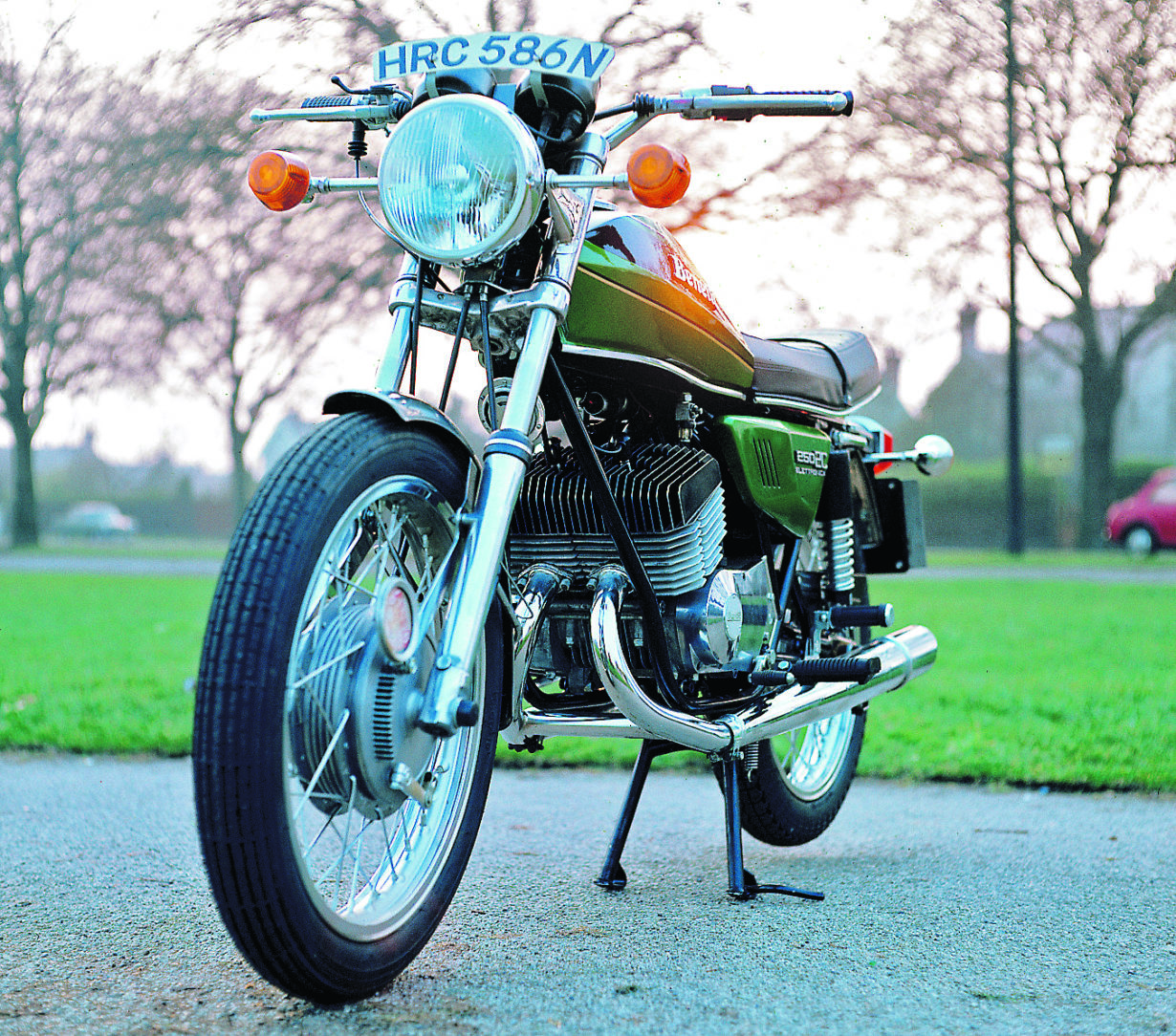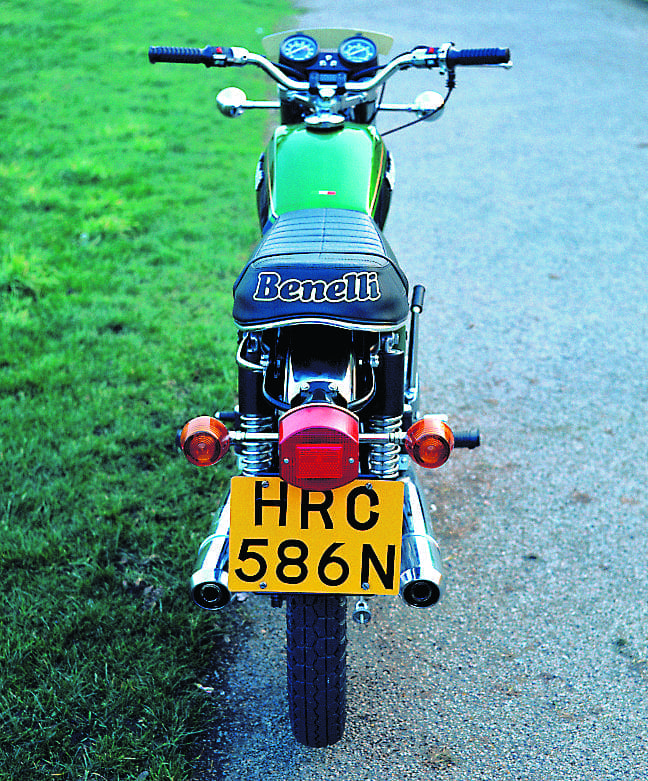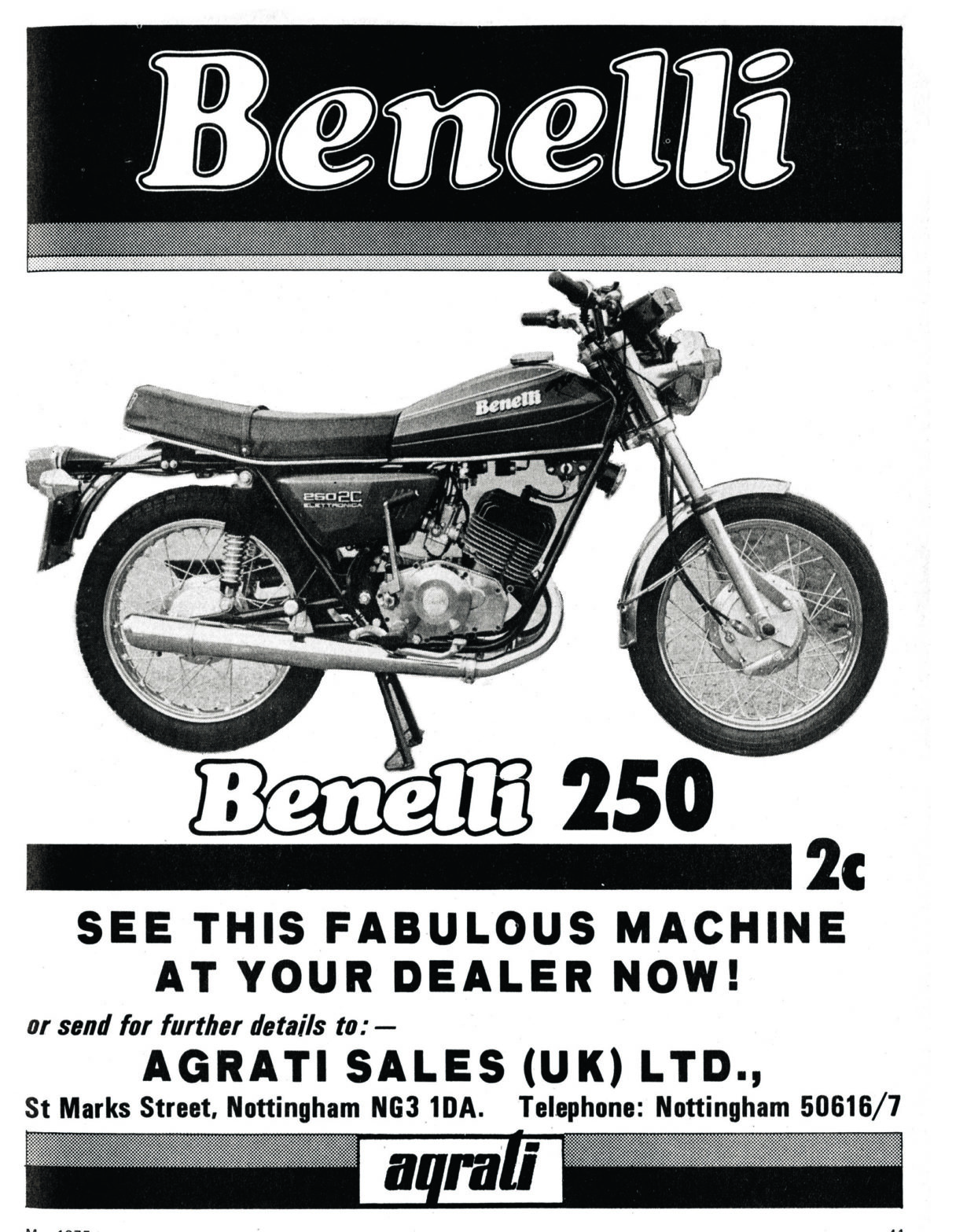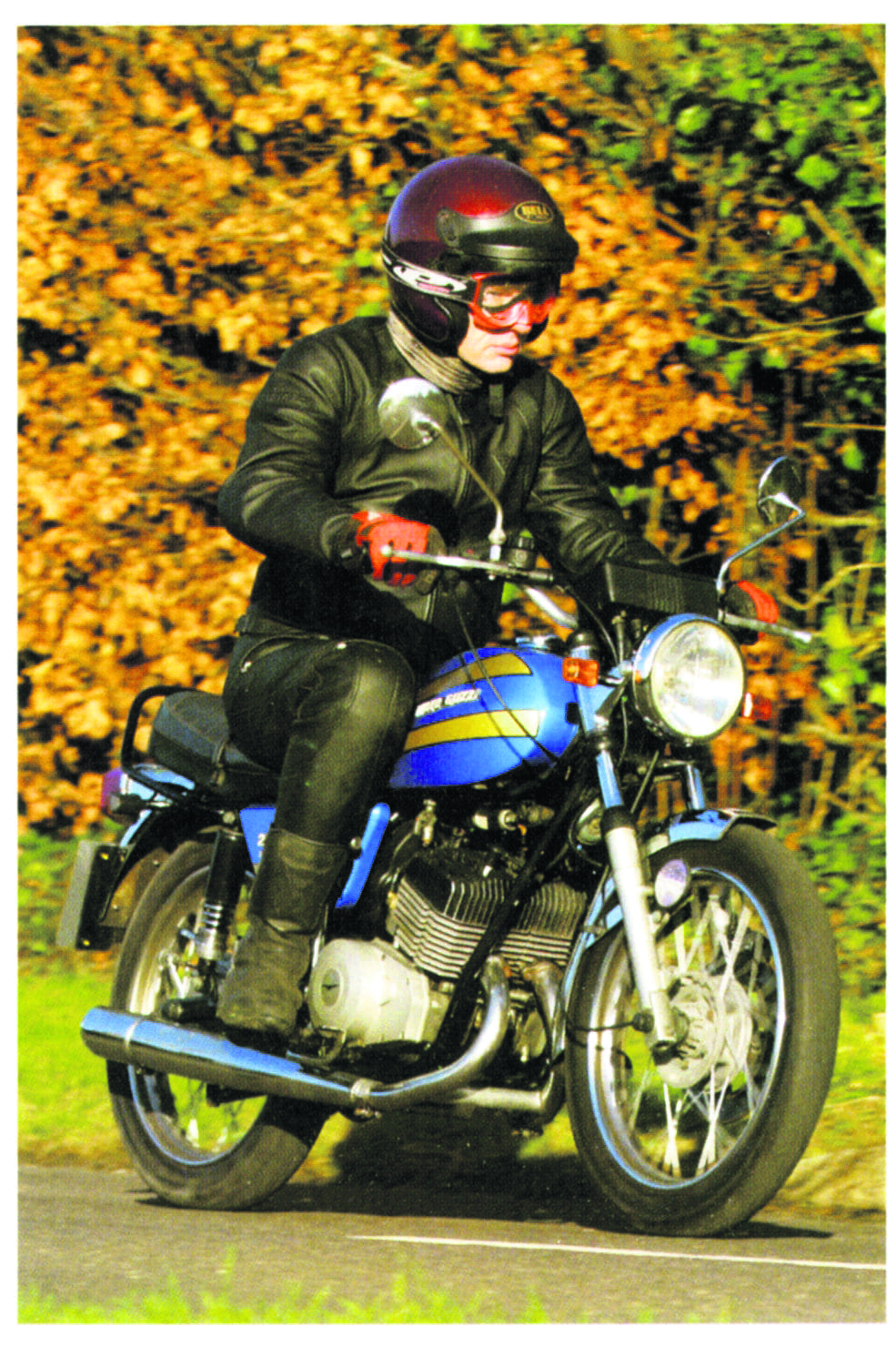An alternative take on 70s stroker twins – WORDS: Steve Cooper PHOTOS: Mortons Archive
Italian bikes come with reputations of various kinds. Generally, they handle better than many of their Oriental counterparts, have malevolent electrics, can be unreliable and difficult to repair and, very often, are fearsomely expensive. This month we aim to set the record straight(er) with a delightful pair of Latin lightweights that won’t break the bank and should have you smiling.

Benelli’s 250C first saw the light of day back in 1971 when the Pesaro firm unveiled its response to the rising tide of Japanese two-stroke twins. Commercialised a year later with some machines sold under the Motobi name, the bike would live on until 1982. Following the acquisition of several Italian manufacturers by Alejandro de Tomaso, the bike was also sold as the Moto Guzzi 250TS. Never a direct threat to the Japanese stinkwheels of the period, the Italian 250 strokers received minimal investment or upgrading and were later sidelined by an indifferent management.
Enjoy everything More Bikes by reading the monthly newspaper, Read FREE Online.
The bikes
You could argue cynically that the Benelli 2C and its Moto Guzzi 250TS sister were doomed from the start. Designed and built with the best of intentions you could even suggest the basic design was hamstrung by either a lack of vision or foresight. Why, when the Japanese bikes had featured alloy cylinders since the late 1960s, would you fit heavy cast iron ones? Similarly, how was any aspiring rider going to tolerate the hassle of mixing oil with petrol when modern two-strokes had been fitted with oil injection since 1964? And yet elsewhere there was advanced thinking with electronic ignition within two years of launch and a radically modern over square bore and stroke configuration. The former obviated the need for gapping points and setting ignition time whilst the latter ensured a punchy, powerful motor. Or perhaps accountants started cutting costs? Who knows!

Whatever the circumstances, the end result was a pair of motorcycles that oozed charm and style and, even if they weren’t as fast as the Japanese bikes, gave a good enough account of themselves on the road. Even if bean counters had been meddling with some of the bike’s components they’d not managed to influence or upset the running gear. The frame and its geometries were well ahead of anything from Japan; the suspension at both was quality Italian Marzocchi stuff; ditto the Grimeca brakes. What the bike lacked in outright performance it made up for via class-leading handling.
Whereas Japanese machinery of the period was constantly evolving and being developed, the Benelli 2C really only ever received cosmetic and aesthetics upgrades. The launch of the Moto Guzzi 250TS was aimed at broadening the 250’s appeal and the adoption of alloy cylinders brought the bikes a little more up-to-date.

The early 1980s saw a café racer version launched and badge-engineered as a Motobi once again. The fitting of three-spoke alloy wheels, triple disc brakes, combined seat/tank unit and a duck tail rear spoiler couldn’t digitise the fact that the model had run its course. With Yamaha’s liquid-cooled 250LC on the market, the air-cooled, pre-mix bikes were so much yesterday’s technology… on paper at least.
On board these Italian quarter-litre twins it’s a different story. Yes, okay, they are a little rawer than their peers but they also have something dialled out of many Japanese machines and that’s character… in spades. The riding position is different, the exhaust note is different and the handling simply has to be experienced to be believed. Judging these machines directly against their contemporaries now is probably unfair to be honest – just try one and be impressed by one of the most cost-effective Italian classics there is!
Lineage and Legacy
Sadly there was never any follow-up to the pair of Italian 250s and they lasted just over a decade more by luck than judgement. Sales outside of Italy were always on the low side for several reasons – the value of the Lire at the time, the lack of oil injection, and precious little in the way of development. The Italian motorcycle industry at the time was chaotic to say the least and there was no resource available to come up with anything significantly better.

Why you might want one now
These delightful Italian two-stroke twins not only represent good value for money, they are also significantly different from most other stroker twins of the period. There’s the undeniable Italian styling with lines, curves and angles you’d never get on a Japanese machine. Cost is another very good reason for homing either the Benelli or Moto Guzzi versions as either is going to between two to four thousand pounds cheaper than anything equivalent from the Orient.
If that’s not sufficient justification then there’s the handing and road manners that come from Italian two wheels. Through the curves the 2C/250TS will always show the GT, RD and KH a clean pair of heels.

Typical Prices
If you want one of these exquisite machines at a bargain price then look to the used motorcycle market of Italy where many turn up for really good money. Just £1600 will buy you one locally that’s in running condition! Even top-end examples don’t go much over £3000. Meanwhile in the UK you might find a similarly-priced, £3,000 bargain for sale privately but we’ve seen dealers asking £5000, which is a little too rich to be honest. Buy a decent 2C/250TS based on condition with a V5C and aim not to spend £4000 would be our advice. And if you simply must buy a project, remember most the stuff you need will have to come from the EU so expect to be paying import duty and VAT big time.
Faults and Foibles
1. CHAIN ADJUSTERS
Earlier 2Cs had single sided chain pullers that are known to be weak. The units from the 250TS are much stronger.
2. CHROME
Italian chrome of the period was notoriously thin and often badly applied.
3. TANK PANELS & TRIM
If anything is missing it’ll be harder to find than Japanese parts and will have to come from mainland Europe.
4. FUEL SYSTEM
The bikes are fitted with Dellorto carburettors so you’ll need to source parts from the appropriate agents and specialists.

5. BRAKES
The double sided front drum brake may take a little setting up but is extremely effective. Later single disc versions are better than period Japanese versions.
6. IGNITION
Electronic from the very first models and will need expert input if there are issues.
Summary
If you wanted an alternative classic 250cc stroker twin then look no further. The 2C/250TS offer a remarkably cost-effective way to get into the classic Italian bike scene. The bikes’ light weight and reassuring handling make for a good ride and you’ll be pleasantly surprised at just how quick these bikes are on B roads. Park up at any bike event and be assured you’ll soon have enthusiasts queueing up to have a look.
#morebikesyoulike #motorcycles #readersrides #motorcycle #ukbikers #bikelife #bikers #motorcyclists #morebikes #morenews #motorcyclenews #motorcyclegear #classicmotorcycles
Advert
Enjoy everything More Bikes by reading the MoreBikes monthly newspaper. Click here to subscribe, or Read FREE Online.



